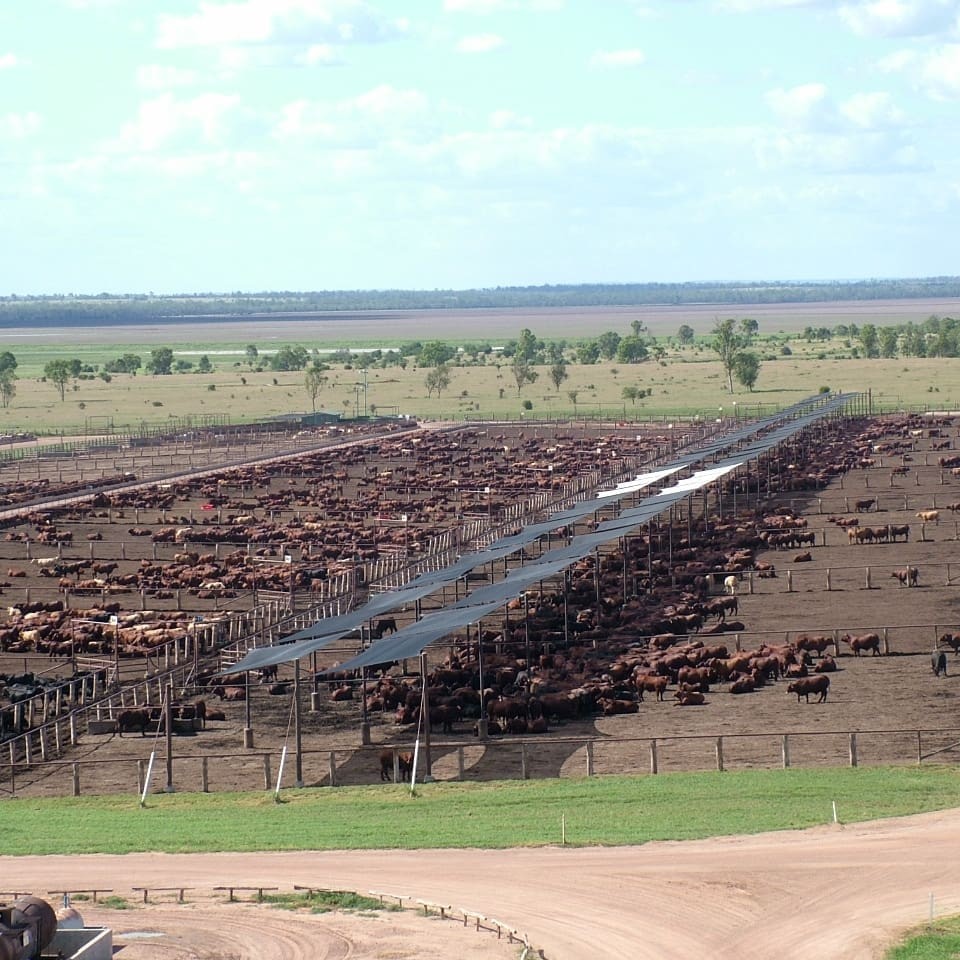 The current ‘artificial’ support for finished cattle prices caused by rain-driven supply shortage has probably masked a slide in profit projections for 100-day grainfed cattle, industry stakeholders told Beef Central yesterday.
The current ‘artificial’ support for finished cattle prices caused by rain-driven supply shortage has probably masked a slide in profit projections for 100-day grainfed cattle, industry stakeholders told Beef Central yesterday.
A trading budget compiled yesterday based on Beef Central’s standard 100-day grainfed beast placed on feed yesterday and exiting the feedyard in May, week four, suggests a result of negative $25 to negative $70, depending on sell prices applied.
That’s basically unchanged from the last calculation a fortnight ago.
Compare this with a negative $43 trading result from Beef Central’s first calculation for the year completed on January 9, and a +$1 trading result seen as recently as late October.
As illustrated in recent Eastern Young Cattle Indicator movements, young cattle values have softened considerably since the start of the year. Yesterday’s EYCI figure of 393c/kg was down 7 percent on the year-opening figure of 419.25c from January 8.
For yesterday’s calculation, the buy price for a crossbred steer ex Darling Downs, remains pencilled-in at 195c/kg, home – a 20c/kg drop from calculations made on January 9, worth about $90 a head on a 450kg feeder steer. Putting it another way, that steer four weeks ago was valued at $967, but is now down to $877.
Finished ration price in yesterday’s profitability calculation remains the same as last time at $250/t.
Some lotfeeders reportedly have dearer grain around them than what the market is today, having bought wheat as the market started to decline during harvest (dropping about $20-$30 on the pre-harvest market), but which has continued to decline in price since. Some may have bought feedgrain at $10/t above the current spot value, analysts say, adding a little weight to current finished ration price.
Total production cost yesterday was calculated at $1360/beast (down from $1454 on January 9), based on flatback feeder steer purchase plus typical feeding program, and a 1pc mortality rate in the yard and typical implant program.
That presents a breakeven figure of 386c/kg dressed weight, compared with 412c a month ago, for 100-day grainfed steers ex-Darling Downs, going on feed yesterday and closing-out May 23. On any given run of cattle, though, yesterday’s breakeven figure would have to be closer to 390c/kg to make money, due to typical grid discounts.
While forward pricing on 100-day cattle is difficult to pin-down at this time of year, with no processors currently aggressively quoting, it appears the contract values for slaughter in May, week four, sit somewhere in an (admittedly wide) range from the low 370s to 385c/kg. The general indication is downward.
Those high/low figures are down from an over-the-hooks grainfed forward sale price of 400c/kg applied in our January 9 assessment.
The better-end of the current forward price range for May (i.e. 385c/kg finished steer price), indicates a trading loss of $20-$25 a head, while at low 370s, the loss would increase to about $70 a head.
At this point, let’s pause for a moment to compare current market circumstances with where they sat this time last year.
The Queensland Cattle Market Index (QCMI) figure this time last year was at 200c, and the US$/A$ exchange rate was US99.73c. In US$ terms, that represents a value of about 200c.
Today, given a QCMI figure around 189c, and an exchange rate nudging US108c, the equivalent value is around 205c. But do the same equation for April last year, and the figure is 216c in $US terms.
Certainly anybody close to the cattle market is still pretty bearish at present, and the trigger will inevitably be bigger flows of cattle coming forward when conditions start to dry out. Having made that point, cattle sales early this week have in general been pretty strong. Warwick was quoted yesterday at 392c, Wodonga 372c, Gunnedah 397c, Carcour 394c.
Grainfed spot price
Given yesterday’s processor grids for spot market 100-day grainfed ox among southeast Queensland plants worth about 385-390c, cattle bought forward back in early October for slaughter this week had breakevens around 395c, currently delivering a loss of $30 a head for processors.
The A$ movement, combined with buyer interest from Korea and Japan which are currently very sluggish, will be key determining factors in direction for finished grainfed cattle prices in coming weeks.
-
Beef Central's regular 100-day grainfed breakeven scenario is based on a representative standard set of production variables, ex Darling Downs. They include a 356kg dressed weight; average daily gain of 2kg; consumption 15kg and a feed conversion ratio of 7.5:1 (as fed); $25 freight; interest component. It is important to note that variations exist across production models (feed conversion, daily gain, mortality, morbidity, carcase specification); from feedlot to feedlot; and between mobs of cattle. For a more specific performance forecast on a given mob of cattle, consult with your preferred custom feeder.
